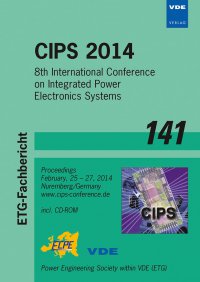Data-driven Modeling of the Ultrasonic Softening Effect for Robust Copper Wire Bonding
Konferenz: CIPS 2014 - 8th International Conference on Integrated Power Electronics Systems
25.02.2014 - 27.02.2014 in Nuremberg, Germany
Tagungsband: CIPS 2014
Seiten: 11Sprache: EnglischTyp: PDF
Persönliche VDE-Mitglieder erhalten auf diesen Artikel 10% Rabatt
Autoren:
Unger, Andreas; Sextro, Walter; Althoff, Simon; Meyer, Tobias (Faculty of Mechanical Engineering, University of Paderborn, Pohlweg 47-49, 33098 Paderborn, Germany)
Neumann, Klaus; Reinhart, René Felix (Institute for Cognition and Robotics (CoR-Lab), Bielefeld University, Universitaetsstr. 25, 33615 Bielefeld, Germany)
Broekelmann, Michael (Hesse GmbH, Vattmannstr. 6, 33100, Paderborn, Germany)
Guth, Karsten; Bolowski, Daniel (Infineon Technologies AG, Max-Planck-Straße 5, 59581, Warstein, Germany)
Inhalt:
In power electronics, ultrasonic wire bonding is used to connect the electrical terminals of power modules. To implement a self-optimization technique for ultrasonic wire bonding machines, a model of the process is essential. This model needs to include the so called ultrasonic softening effect. It is a key effect within the wire bonding process primarily enabling the robust interconnection between the wire and a substrate. However, the physical modeling of the ultrasonic softening effect is notoriously difficult because of its highly non-linear character and the absence of a proper measurement method. In a first step, this paper validates the importance of modeling the ultrasonic softening by showing its impact on the wire deformation characteristic experimentally. In a second step, the paper presents a data-driven model of the ultrasonic softening effect which is constructed from data using machine learning techniques. A typical caveat of data-driven modeling is the need for training data that cover the considered domain of process parameters in order to achieve accurate generalization of the trained model to new process configurations. In practice, however, the space of process parameters can only be sampled sparsely. In this paper, a novel technique is applied which enables the integration of prior knowledge about the process into the datadriven modeling process. It turns out that this approach results in accurate generalization of the data-driven model to unseen process parameters from sparse data.


